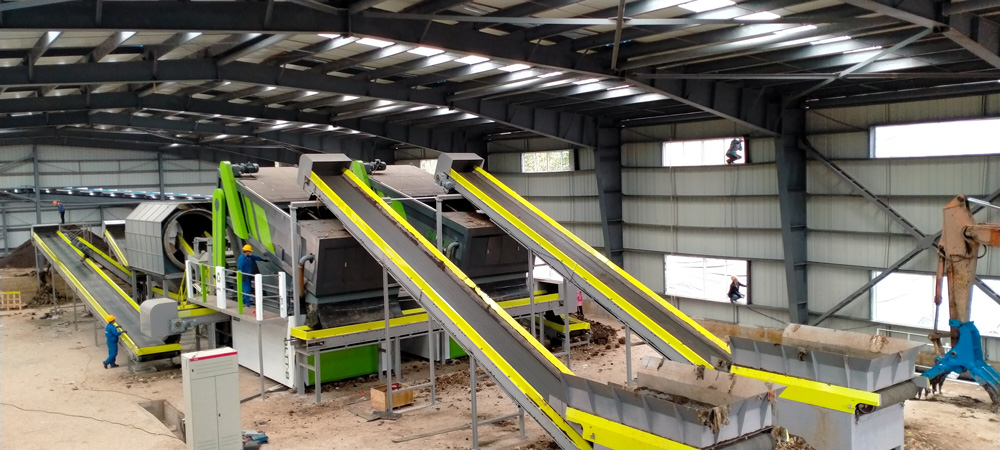 Time:2025-04-01
Time:2025-04-01
 Source:青绿环境
Source:青绿环境
In the waste - management industry, the efficiency of sorting aged waste is crucial. With the increasing amount of waste generated due to social development, improving sorting efficiency not only enables the recycling of resources but also reduces environmental harm. This makes the rational selection and optimization of equipment particularly urgent.

1. Drum Screen: The drum screen uses screens with different aperture sizes to sift materials of varying particle sizes. Its working principle is simple and straightforward. It performs well in the preliminary separation of different - sized particles in various types of waste, such as separating large - sized construction waste from small - sized domestic waste. However, its ability to separate lightweight debris, like plastic bags, is limited.
2. Bouncing Screen: The bouncing screen sorts materials based on their bouncing characteristics and can effectively distinguish between materials of different densities. It performs well in separating soil, sand, and lightweight plastics. However, it is less effective in sorting irregularly - shaped materials with small density differences.
3. Air Separator: The air separator utilizes the differences in wind resistance of different materials to achieve separation. It is very effective in separating materials of different weights, such as paper, plastic sheets, and heavy stone blocks. However, if the control factors of wind force, such as its magnitude and direction, are not well - managed, it can greatly affect the sorting accuracy.
4. Magnetic Separator: The magnetic separator is specifically designed for magnetic materials and is commonly used to separate ferromagnetic substances from waste. It is indispensable in the recycling of iron - containing metals.
Factors to Consider When Selecting Aged Waste Sorting Equipment
When selecting aged waste sorting equipment, multiple factors need to be considered. In terms of waste sources, if it is municipal solid waste, which has a complex composition, a combination of various equipment should be considered. If it is industrial waste, certain specific sorting equipment may be more applicable. For medical waste, safety is a key consideration, and higher requirements for the sealing of sorting equipment are needed.
Regarding the characteristics of the waste components, for waste with high moisture content, equipment that is not easily affected by water should be chosen. For waste with high ash content and a variety of recyclables, a more flexible and diverse combination of sorting equipment is required. Moreover, for small - scale processing, a combination of small - sized and low - cost equipment may be more suitable. For large - scale processing, large - sized and high - efficiency equipment is needed, while also considering the costs of equipment purchase, operation, and maintenance. For example, for aged municipal solid waste with a high content of plastics and paper and irregular shapes, an air separator can be used to separate light and heavy materials, a bouncing screen for further separation, and a magnetic separator to remove metals. This combination can form a relatively efficient sorting system, and it is important to balance the relationship between equipment investment and output benefits.













 Prev
Prev











